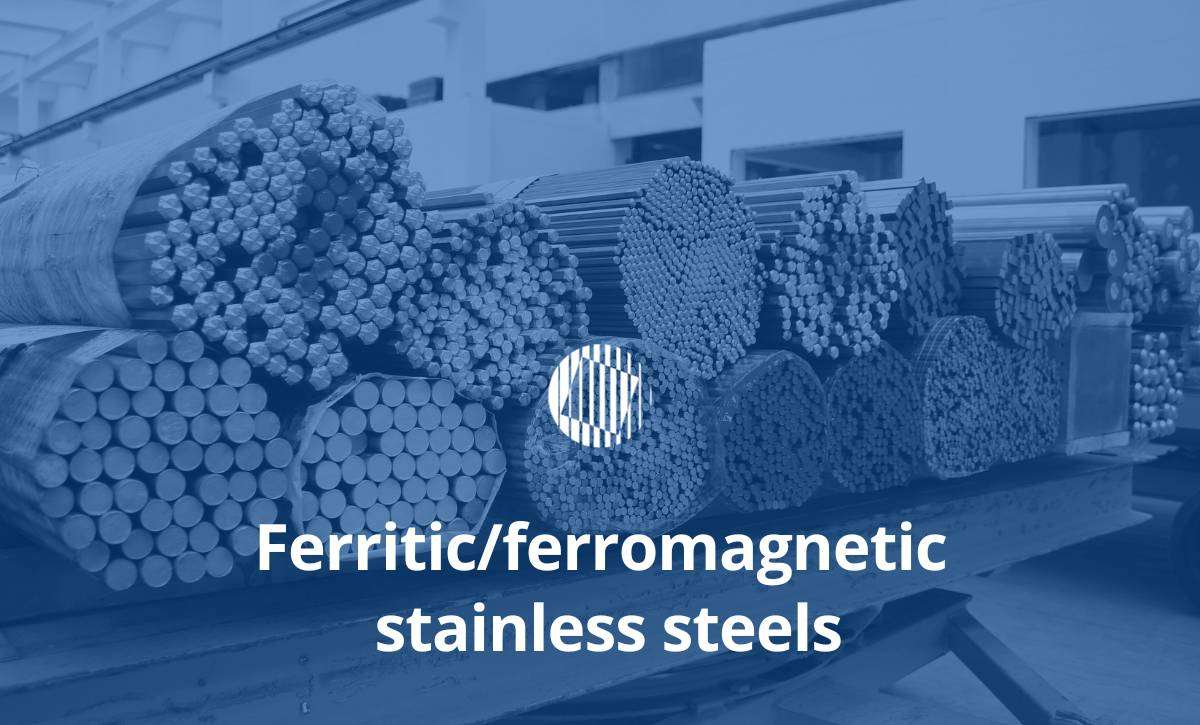News
19 September 2023
Ferritic/ferromagnetic stainless steels
Domestic and industrial applications
Ferromagnetic/ferritic grades of EN 1.4105 and EN 1.4106 can be used in the electromagnetic applications such as solenoid valves, electrovalves, as well as electromagnetic pumps, and electromagnetic switches, electromagnetic actuators, and so on.
The general aforesaid applications are involved with a variety of domestic and industrial sectors such as petrochemicals, automotive, food, and other industries.
Heat treatment after cold wire drawing
Unlike martensitic grades, FSS grades are not able to be stiffened by the quench hardening but only through cold working processes such as cold wire drawing. In addition, for enhancement of the microstructures, the cold rolling and/or drawing as well as the subsequent annealing process are the main concern.
These grades are being used mainly in annealed condition (+A). Recrystallization annealing heat treatment with high-enough soaking temperature and long-enough incubation time (well-heat- treated) may lead to a fully annealed materials concerning the required properties.
Microstructure
The microstructures of the annealed materials demonstrate fully ferritic grains under the appropriate annealing condition, reaching the fine and equiaxed grains in the end before leading to any excessive grain growth, which can be undesirable. Under analyses by XRD and SEM approaches, there might be observable a percentage of precipitations such as chromium carbides after annealing and cooling stages, but the amount can be negligible in the case of any notable effect on the properties, following an appropriate annealing and cooling processes.
Properties
Ferritic/ferromagnetic grades are the most suitable choice for the related applications as a tradeoff among magnetic properties, corrosion resistance, and mechanical properties alongside other properties, including machinability, electrical resistivity, and weldability.
Properties, Corrosion resistance
These ferromagnetic/ferritic grades basically exhibit moderately good resistance to corrosion (pitting and intergranular) in the mild environments, because of their chromium and molybdenum content. To be exact, they are resistance to intergranular corrosion but not in the sensitized condition.
Based on comprehensive experimental research in Politecnico di Milano as a collaboration with Eure Inox srl, in general, these two grades demonstrate moderate resistance to general corrosion immersed in the mild corrosive medium. They exhibit the passivation and repassivation formation behavior tested in sulfuric acid environment while the active anodic behavior observed in chlorinated medium, indicating a kind of passive-like oxide layer formation in the absence of passivation, considering further electrochemical steady state through reversed scan loop. In any case, such behavior, as the protective barrier, covered up the clear attack by pitting while also the intergranular corrosion is not negligible. Moreover, higher corrosion resistance is achieved by the priority factors of lower reduction rate, low-enough local misorientation (arisen from lower dislocation density) of around 0.15o (up to 0.35o) which is evidently arisen from higher annealing soaking temperature and incubation time, respectively.
|
Grade and conditions |
EN 1.4105Si/AISI 430F |
EN 1.4106 |
|
Well-annealed |
Well-annealed |
|
|
Coercivity or coercive field (A/m )* |
<250 |
|
|
Relative magnetic permeability |
>1200 | |
Properties, Mechanical behavior
As a non-hardenable material, the stable mechanical properties can be immediately achieved by a normal and correct annealing conditions:
|
Grade and conditions |
EN 1.4105Si/AISI 430F |
EN 1.4106 |
|
Well-annealed |
Well-annealed |
|
|
UTS (MPa) |
480-560 |
|
| 0.2%OYS (MPa) |
350-420 |
|
|
TE (%) |
>30% |
|
|
Hardness (HB) |
<200 |
|



